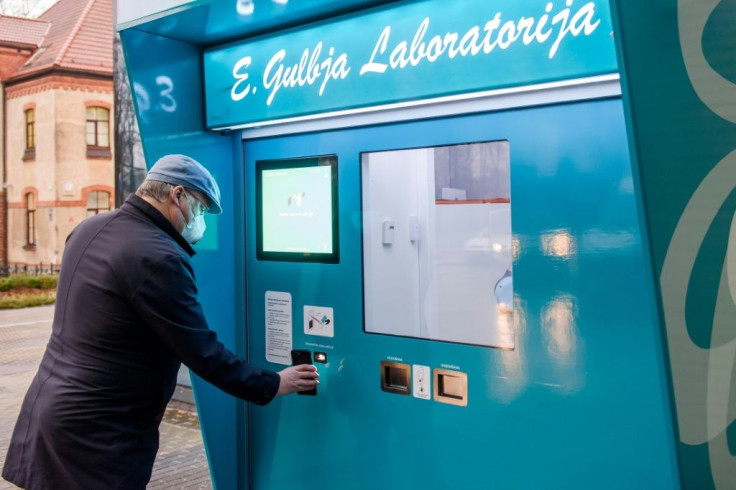Latvia Pioneers Automated Virus Test Centre
Latvia is pioneering an automated coronavirus testing station that can operate around the clock and virtually eliminate the risk of infection during the screening process, organisers told AFP on Wednesday.
The machine -- a blue box roughly two metres high and one metre wide -- has tested roughly 500 students and staff since it opened last week at the Pauls Stradi?s Clinical University Hospital in Riga.
Created by three Riga-based companies, the machine is initially to be used by university hospital employees but the firms are aiming to manufacture more units for other institutions in the capital and rural areas with limited access to testing.
"People who might be infected can avoid contact with medical staff or others at the hospital or our labs, eliminating the risk that they might inadvertently let the infection spread further," said Dr Didzis Gavars, chief scientist at the E. Gulbja Laboratory, one of the developers of the station.
Believed to be the first of its kind, the station offers PCR tests that detect coronavirus RNA.

Operating around the clock, it also affords ease of access that could encourage more people to get tested, Gavars told AFP on Wednesday while demonstrating how the station works.
A one-armed robot inside the station hands coronavirus test to a user standing at its front hatch and then collects samples, storing them in another rack for analysis.
A plexiglass window allows people to watch the robot complete the entire process. A remote control option also allows input from technicians working at labs where the samples are taken to be processed.
People then receive results via email in less than 24 hours.
Gavars said his company sought out local materials to produce the station in order to avoid supply chain problems similar to those experienced in Europe and North America early in the pandemic when masks and other personal protective equipment was slow to arrive from Asia.
© Copyright AFP 2024. All rights reserved.







